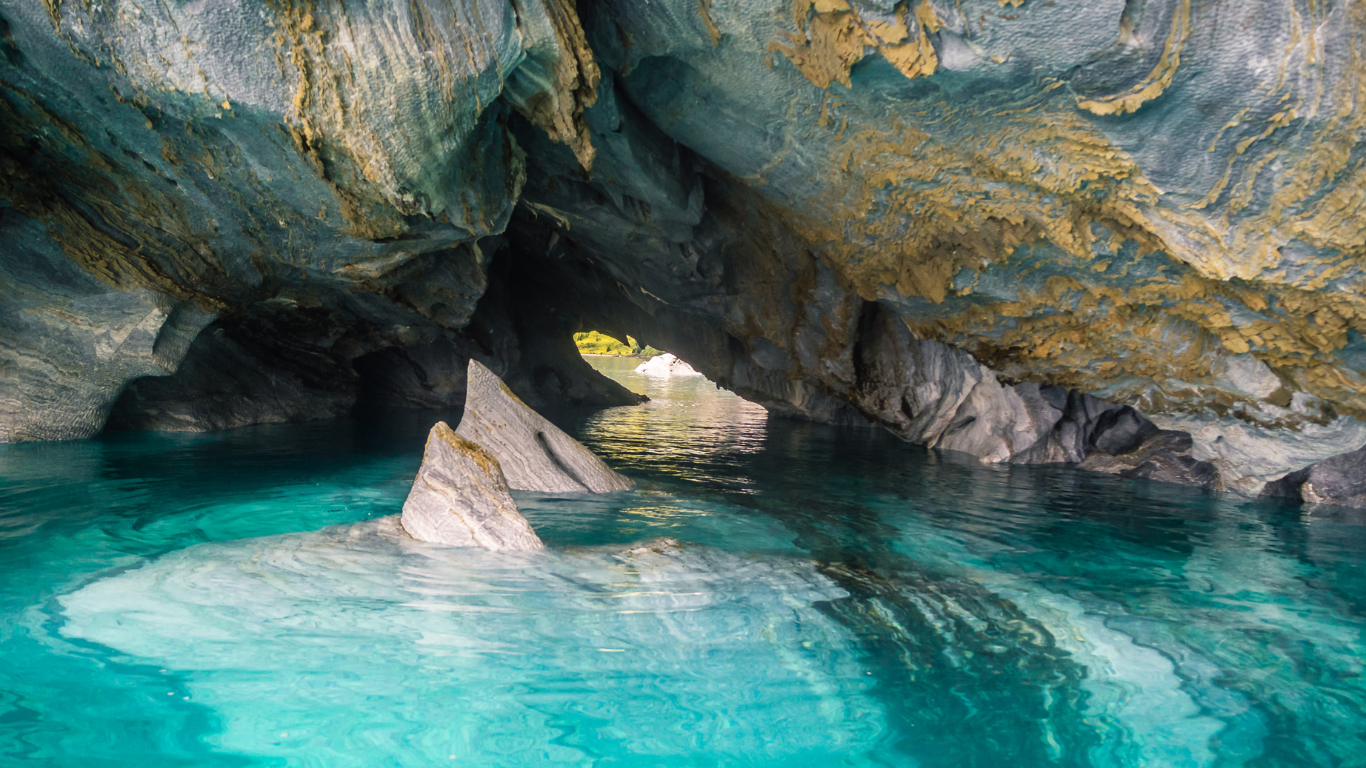Tucked away in the heart of Patagonia, on the shimmering waters of General Carrera Lake—shared by Chile and Argentina—lies one of the most breathtaking natural wonders of the world: the Marble Caves, also known as Capillas de Mármol or “Marble Chapels,” and often referred to as Marble Cathedrals due to their majestic beauty.
These awe-inspiring caves are not the result of human design, but rather the work of nature's slow and steady hand. Formed over 6,000 years ago, the caves were sculpted by the gentle but persistent erosion of limestone, a sedimentary rock, by the lake’s waters. The result is a series of wave-like, flowing geological formations that seem almost otherworldly.
A Symphony of Light, Water, and Stone
The three most famous formations in the Aysén region are La Capilla (The Chapel), El Catedral (The Cathedral), and La Cueva (The Cave). Visitors are mesmerized by the way the crystal-clear turquoise waters interact with the natural light, casting dazzling reflections on the marble walls. These surfaces shimmer in shades of gray, white, green, and even yellow, creating a dreamlike, ethereal atmosphere inside the caves.
What makes the experience even more magical is its ever-changing nature. Depending on the time of day, season, weather, and angle of sunlight, the caves offer different visual spectacles—ensuring that no two visits are ever quite the same. It's no surprise that thousands of travelers from around the world flock to this hidden gem to witness its surreal beauty up close.
Accessing the Marble Caves
The only way to reach the caves is by boat or kayak, making the journey part of the adventure. Travelers must first arrive at the small town of Puerto Río Tranquilo, where they can join guided tours using small boats or kayaks that glide through the serene lake waters, bringing them into the heart of the marble labyrinth.
The full excursion typically lasts around two hours, allowing ample time for exploration, photography, and peaceful contemplation.
Best Time to Visit
The optimal time to visit is between December and March, when weather conditions are more favorable and the lake is calmer, making navigation easier and the experience safer and more enjoyable. During this period, the emerald and aquamarine hues of the lake contrast beautifully with the backdrop of the majestic Andes Mountains, offering a picture-perfect setting.
A Sanctuary for Wildlife
Beyond their visual splendor, the caves also provide shelter for various species of wildlife, including birds, fish, and even sea lions, adding another layer of wonder to an already unforgettable experience.







